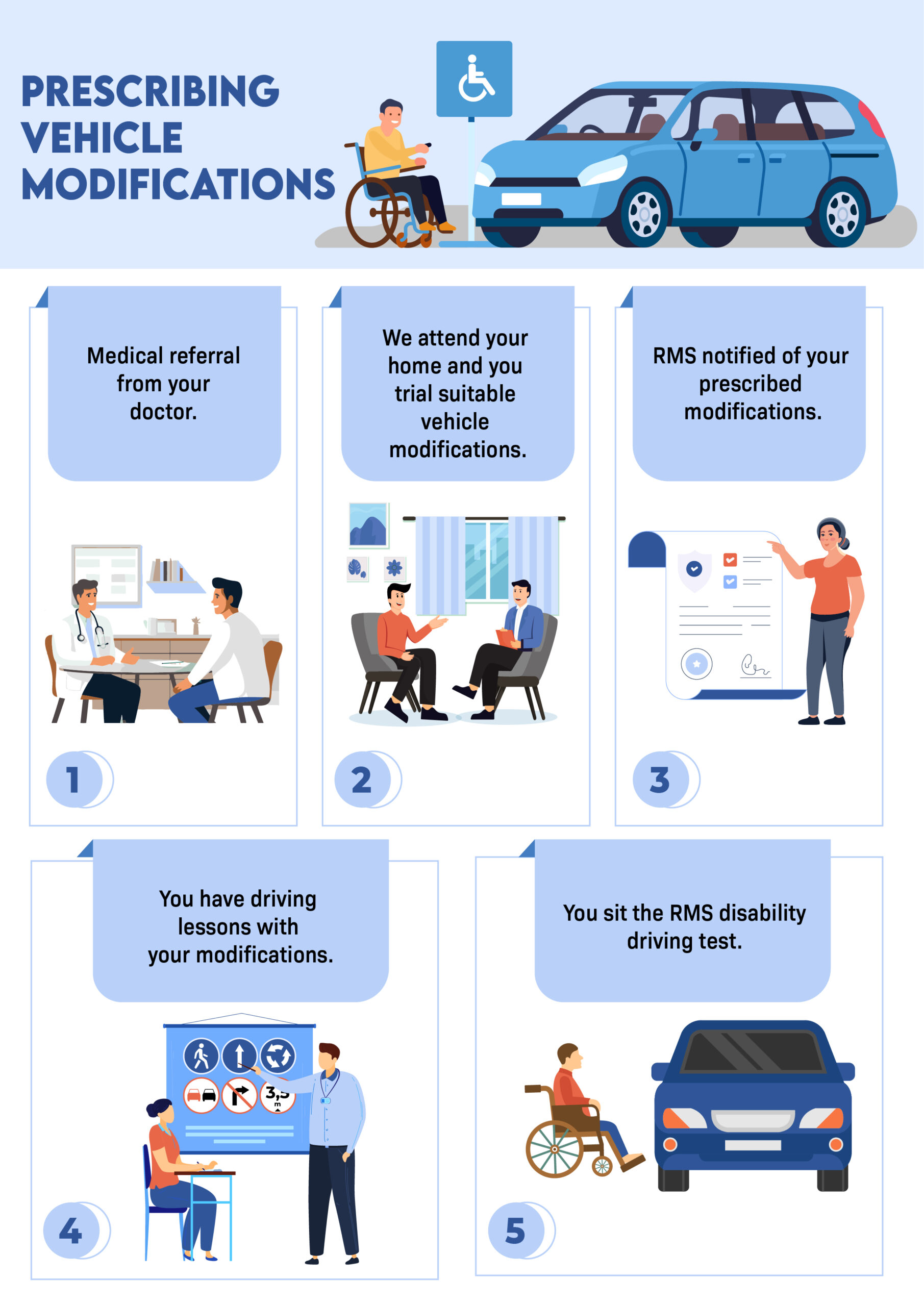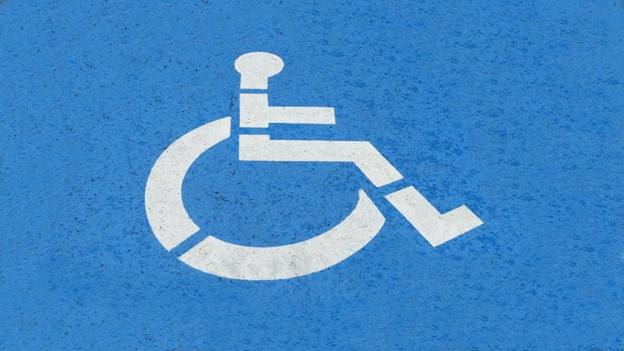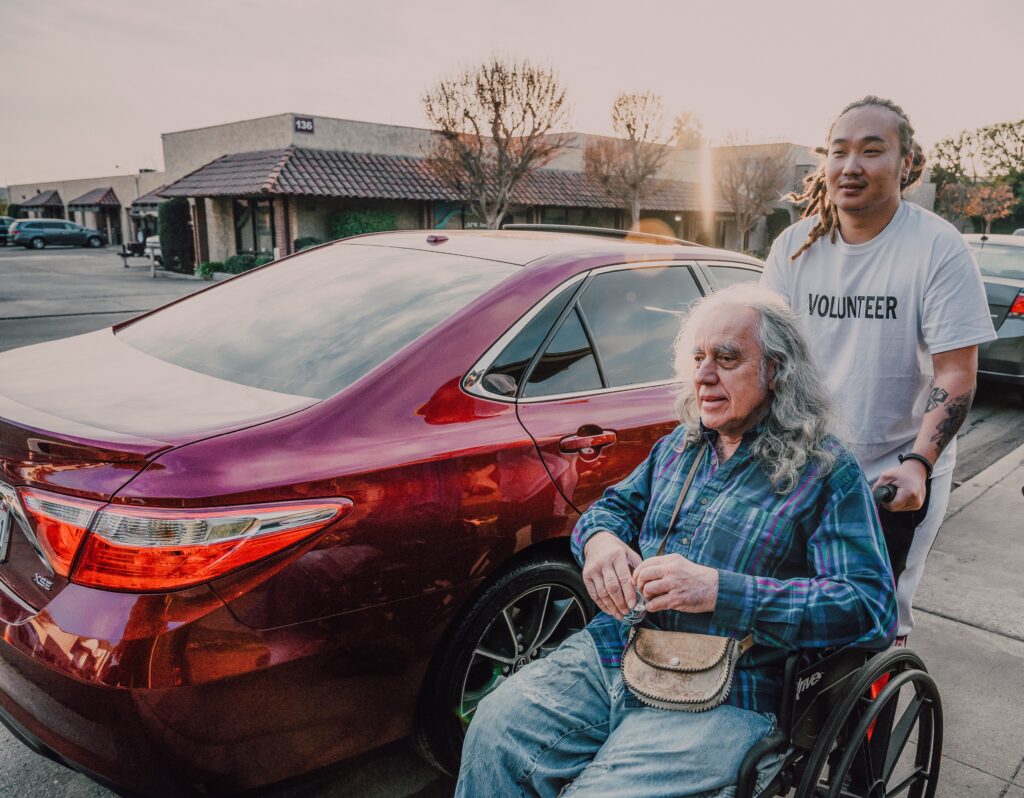Background
In the past, people with significant physical conditions may not have been able to drive and were heavily reliant on others for transportation. With the great advancements in technology in recent decades, having a physical handicap often no longer prevents a person from driving or learning to drive. Let’s look at a brief history about handicap driving and the RMS requirements around physical disabilities.

Physical conditions
In general, there are two main categories of medical conditions and disabilities: physical and cognitive conditions. Of course, some people can have both types of conditions. However, this article will focus primarily on physical disabilities that may affect driving, such as:
– Cerebral palsy
– Spinal cord injuries
– Limb amputations
– Musculoskeletal injuries
– Paralysis
– Spina bifida
– Nervous conditions
– Burn injuries
– Congenital birth defects
Handicap driving has evolved over the years
Handicap driving has evolved over the years. As society has changed, so have the needs of disabled drivers. The first handicapped drivers were wheelchair users and used specially designed tricycles. At first, this required someone to manually push the tricycle. Soon, technology evolved and motors were added to the tricycle.
Before the 20th century, there were no special laws or regulations for handicapped drivers. However, as more and more people with disabilities drove, standardized processes and regulations were adapted. In NSW, the RMS as the licencing body, must be notified of any medical issue that may impact on one’s driving. If the person requires vehicle modifications due to their physical disability, there is a clear process to ensure they are driving safely. Today, thanks to advancements in technology, most physical deficits can be overcome by vehicle modifications. These modifications can be adapted and installed in most vehicles by qualified vehicle modifiers.
Prescribing vehicle modifications in NSW
There are guidelines in NSW regarding how physical conditions and disabilities may impact on driving. This process involves the prescription of vehicle modifications and regular assessment and monitoring of the driver’s medical condition. As with any medical condition in relation to driving, the first step is to obtain a medical assessment. It is the licence holder’s primary responsibility to tell the RMS of their condition or disability. The person’s doctor also commonly makes this notification, and a thorough medical assessment is completed. The doctor will fill out the RMS medical fitness to drive form. This process can include referring onto other specialists or recommending further testing. For example, it is common for stroke patients to be referred to a neurologist for further assessment to determine if the person can return to driving. It is also important to note that a doctor has the authorization to cancel someone’s driver’s licence due to medical reasons.
Once the medical clearance has been obtained, the doctor or RMS may request that the person undertakes an Occupational Therapy (OT) driving assessment. For significant physical deficits, it is common for the assessment to prescribe necessary vehicle modifications. This is because doctors do not observe the person driving, while this is the specialized role of the Driver Trained OT.
In the OT driving assessment, the person will trial appropriate vehicle modifications and will often require several lessons to drive safely with the modifications. Once they are confident that they are driving safely in all forms of traffic, they will undergo the RMS disability driving test. Assuming they pass this test, they cannot legally drive without their prescribed modifications.
Types of vehicle modifications
There are a wide range of vehicle modifications available today. This means that for most people with a physical handicap, they can still drive safely. This is incredible advancement and progress compared to even two or three decades ago. People with high level paraplegia (e.g. who are confined to a wheelchair) can drive in modified vans that allow them to drive from their wheelchair. Other examples of vehicle modifications include:
– Different forms of hand controls for people who have deficits in their feet (lower limbs).
– Spinner knobs for people who have deficits in their hands (upper limbs). There are basic and electronic spinner knobs for varying degrees of upper limb deficits/weakness.
– Adaptive mirrors to eliminate the need to turn head/neck for head checks.
– Safety ramps or transfer boards to aid safe transfers.
Any vehicle modification that is necessary to drive according to RMS standards must be endorsed on the person’s licence.
The NDIS and handicap driving
Vehicle modifications can be costly. In general, the more complex the modification, the greater the costs of equipment and installation. As people with physical disabilities are commonly on the NDIS, this is often a great help for handicap drivers and their families. When developing your NDIS plan, make sure to identify clear and achievable goals. If driving and maintaining your driver’s licence is important to you, state this clearly to your NDIS coordinator. To obtain NDIS funding for vehicle modifications, OT reports and assessments are required.





